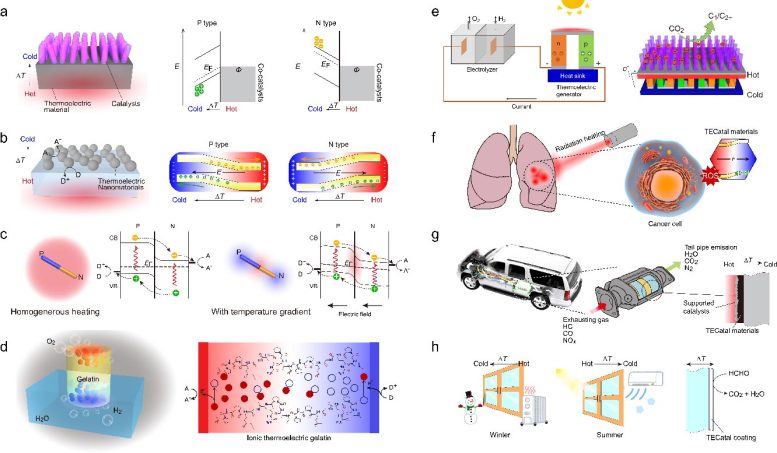
Thermoelectric materials, once primarily focused on converting waste heat to electricity, now facilitate catalytic processes, offering innovative solutions for energy efficiency and environmental enhancements.
Thermoelectric materials, crucial for converting thermal to electrical energy and reducing waste, have broadened their utility beyond heat recovery to catalysis, driven by natural and industrial heat gradients.
With the rapid development of human society, the demand for energy has experienced explosive growth. However, at the current stage, the utilization efficiency of primary energy is less than 40%, with the rest being lost in the form of waste heat, leading to serious energy waste and exacerbating environmental issues.
Thermoelectric materials, as a new energy material capable of directly converting thermal energy to electrical energy, have gained increasing attention in the field of waste heat recovery. When there is a temperature difference at the two ends of thermoelectric materials, a thermoelectromotive force is generated within the material, thus achieving the conversion of thermal energy to electrical energy.
Emerging Applications of Thermoelectric Materials
In addition to utilization as electric generators, thermoelectric materials have opened new directions for catalysis in recent years. The small temperature gradient (<100 °C) caused by the widespread heat in nature and industrial production provides sufficient driving force for catalytic reactions.
This enables the reuse of low-grade waste heat resources to drive different catalysis processes such as hydrogen production, organic synthesis, environmental purification, and biomedical applications. It offers a new solution for improving energy utilization efficiency, energy conservation, emission reduction, and green catalysis.

Working modes of TECatal systems: (a) hybrid structure mode, (b) single-phase mode, (c) P-N nanojunction mode, and (d) thermogalvanic cell mode. Potential applications of TECatal materials in (e) H2 production and CO2 reduction, (f) tumor therapy, (g) vehicle tail gas treatment, and (h) window glass coating for indoor air purification. Credit: Science China Press
Advances and Future Prospects in Thermoelectrocatalysis
Based on the recent advances in this emerging area, the team from the Institute of Quantum and Sustainable Technology at Jiangsu University, has proposed the conceptual application direction of thermoelectrocatalysis (TECatal) and systematically summarized existing thermoelectric catalytic materials and working modes. Four major working modes were suggested, including hybrid structure mode, single-phase mode, P-N nanojunction mode, and thermogalvanic cell mode.
The study explores ways to improve the performance of thermoelectric catalytic materials through optimization of thermoelectric properties, band engineering, microstructures, and stability. Furthermore, the prospects of thermoelectric catalytic materials in areas such as green energy, tumor treatment, and environmental governance were proposed and discussed, providing important references for the future development of this field.
Reference: “Thermoelectrocatalysis: an emerging strategy for converting waste heat into chemical energy” by Yuqiao Zhang, Shun Li, Jianming Zhang, Li-Dong Zhao, Yuanhua Lin, Weishu Liu and Federico Rosei, 25 January 2024, National Science Review.
DOI: 10.1093/nsr/nwae036









Be the first to comment on "Unlocking the Secrets of Thermoelectric Materials for Future Energy"